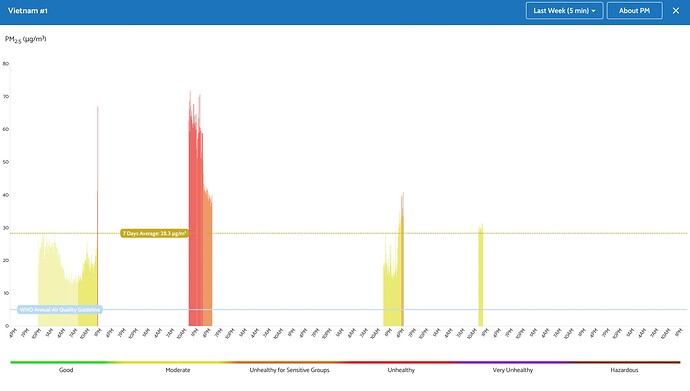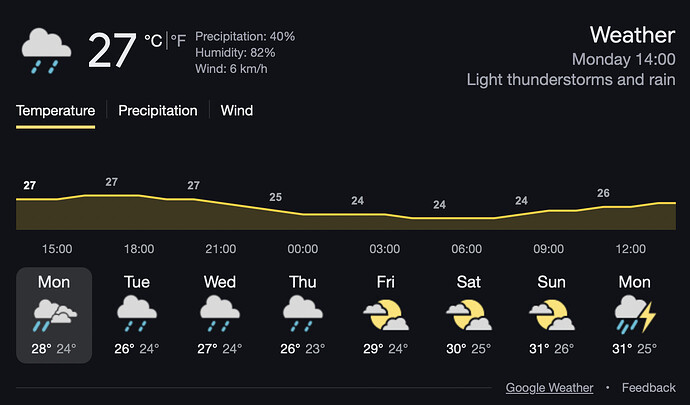I’ve had my AirGradient Open Air Max set up for around one week now and I have a few more thoughts and findings to share.
I opted to change the batteries on my Max and went out to purchase a set of three 18650 batteries. I opted for 3x Panasonic 3500mAh batteries as their price was reasonable and Panasonic is generally a reputable brand. Unfortunately, after getting them home, I realised that the Open Air Max only has space for unprotected 18650 batteries. While the protected 18650s can be forced into the battery slot, I would highly recommend against this due to the fact that you could break the battery holder or even the mainboard (to which the battery holder is attached).
I don’t have much experience with 18650 batteries, and for anyone else in the same boat, this is something to keep in mind. Some 18650s are classed as ‘protected’, meaning they have a built-in circuit to protect from dangers such as overheating and short circuiting. Unfortunately, these circuits add a few millimetres to the length of the batteries, and mean that they may not fit into some devices (like the Open Air Max).
After this finding, I went out to purchase some unprotected 18650s and I found these to work well. They’re still 3500mAh, giving the device around 10,000mAh of total capacity - the same capacity as most portable batteries. I believe this is enough capacity for 3-5 days of runtime without sunlight (from a full charge).
I am testing a beta device without any power-saving improvements (compared to the original Open Air which is designed to be powered via a USB cable). The final product will likely have 4-5x the battery life of the device I am testing. This is not a final product, so please keep this in mind!
Unfortunately, as can be seen by my monitor’s reporting above, I haven’t been able to get the device powered very often due to a lack of sunlight. Despite being in Vietnam, which is generally quite sunny, I’ve had trouble powering the device due to rainy and overcast days (and days of very heavy air pollution) and the position the monitor is in. Since we’re currently staying in an apartment, I’ve faced the device towards the morning sun. However, it doesn’t receive any sun after 1-2 pm. As you can see, the sunlight is often enough to power the device temporarily and to charge the batteries for a few hours of runtime, but it’s far from enough to consistently charge the device.
Therefore, I believe that a second solar panel may be needed for quite a few people installing these. If you can place the device in a garden or somewhere where it can have more than a few hours of sun, or if you live in an area that gets regular (strong) sunlight, this shouldn’t be an issue. However, I’ll definitely need to look into relocating my monitor.
As you can see, the weather hasn’t exactly been conducive to running a solar-powered air quality monitor!
Also, one other note that I forgot in my first post: the AirGradient Max uses the Senseair Sunlight instead of the S8/S88 found in the other AirGradient monitors. While this is a more expensive sensor, it has very similar accuracy to the S8/S88 with the advantage of being vastly more power efficient. Just a minor change compared to the original Open Air that I forgot to mention!

